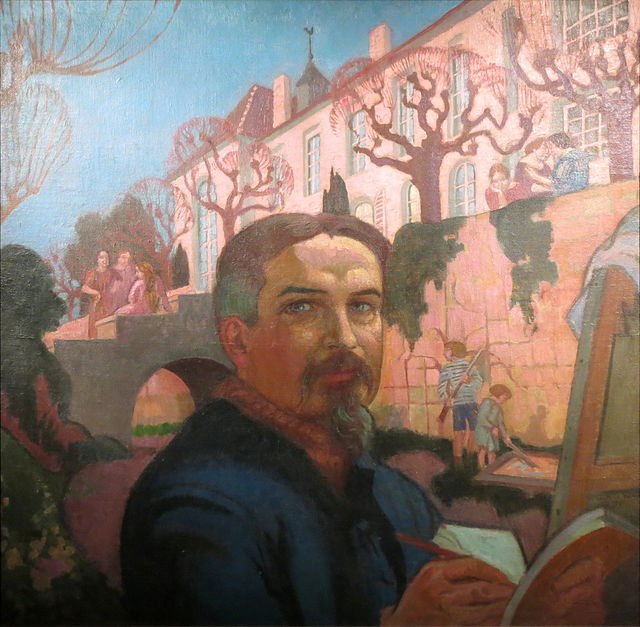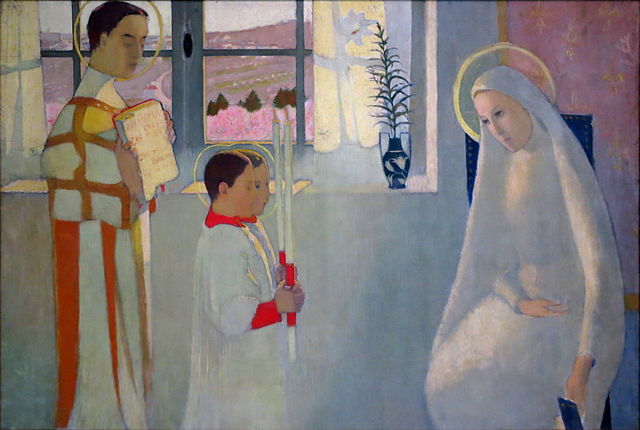Maurice Denis was a French painter, decorative artist, and writer. An important figure in the transitional period between impressionism and modern art, he is associated with Les Nabis, symbolism, and later neo-classicism. His theories contributed to the foundations of cubism, fauvism, and abstract art. Following the First World War, he founded the Ateliers d'Art Sacré, decorated the interiors of churches, and worked for a revival of religious art.
Self-portrait, 1916
Self-portrait at the age of 18 (1889)
Climbing to Calvary (1889)
Le Mystere Catholique (1889)
The Nabis were a group of young French artists active in Paris from 1888 until 1900, who played a large part in the transition from Impressionism and academic art to abstract art, symbolism and the other early movements of modernism. The members included Pierre Bonnard, Maurice Denis, Paul Ranson, Édouard Vuillard, Ker-Xavier Roussel, Félix Vallotton, Paul Sérusier and Auguste Cazalis. Most were students at the Académie Julian in Paris in the late 1880s. The artists shared a common admiration for Paul Gauguin and Paul Cézanne and a determination to renew the art of painting, but varied greatly in their individual styles. They believed that a work of art was not a depiction of nature, but a synthesis of metaphors and symbols created by the artist. In 1900, the artists held their final exhibition and went their separate ways.
The first Nabis painting, by Paul Sérusier, Le Bois d'Amour à Pont-Aven or Le Talisman, 1888, oil on wood, 27 x 21.5 cm, Musée d'Orsay, Paris
Motif Romanesque by Maurice Denis (1890), one of the earliest Nabi paintings
Maurice Denis, Evening in September (1891)
The printed dress by Édouard Vuillard (1891), Museu de Arte de São Paulo








